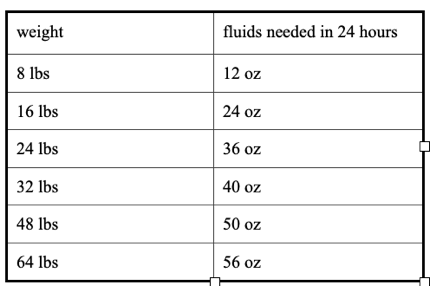WHAT IS IT?
Gastroenteritis is the same thing as Stomach flu. Stomach “flu” is not actually related to influenza at all. This is an important point because they are completely different illnesses. Anytime you have vomiting combined with diarrhea, a mild fever and little other symptoms of other illnesses, then we call it stomach flu.
WHAT CAUSES IT?
Stomach flu is almost always caused by viral infections. The viral infections are caught from ingesting the secretions of other people. You get the secretions from other people by; not washing hands after using the bathroom, not washing hands before eating, by touching contaminated surfaces such as door knobs. Food poisoning frequently gives the viral infection or a toxin that can also cause vomiting or diarrhea when the food is not properly cooked or the food preparer is not using proper hygienic techniques (hand washing, cleaning cutting boards and utensils, etc.). Bacteria occasionally cause stomach flu, but these are usually much more severe. There are no treatment for the viral stomach flus or food poisoning except home remedies as given below, but there are treatments for some of the bacterial stomach flus. The signs of a bacterial stomach flu are:
• Blood in the vomit or stool
• Fever over 103.5 for over 2 days
• >8 stools per day for more than 5 consecutive days
• the entire illness lasting more than 14 days
• a very ill appearing child
WHAT ARE THE COMPLICATIONS?
The most common complication is dehydration. Occasianally diaper rashes occur by allowing too much moisture in the diaper area, frequent cleaning with abbrasive cleaners or harse acidic stools eating away at the skin.
HOW DO I TELL IF MY CHILD IS DEHYDRATED?
Just because you have vomiting or diarrhea does not mean you are going to get dehydrated. The best signs to look for are a dry mouth or decreased urine output. There also may be slight increase in the heart rate, butthis may not be noticeable in a child who is sick anyway. A child may tear with mild dehydration and you should not look for this as a sign. If a child below a year does not urinate for more than 6 to 8 hours or a child over a year of age does not urinate for more than 12 to 14 hours, then that child is probably dehydrated and you should call your physician immediately.
To prevent dehydration, your child should drink the regular liquids he or she is used to (formula, milk, etc.). If your child is not eating anything and will not take formula or milk, then give Pedialyte (or any oral rehydration solution for children, not plain water, flat sodas or Gatorade). When a child gets nothing except clear liquids, they will lose essential electrolytes (sodium, potassium, chlorides, sugars) and that may make them more sick. Therefore, children getting clear liquids only should replace those electrolytes with these special solutions. If your child is eating some foods, though, then that probably is giving them enough electrolytes and you may give the other liquids. The chart below will give you an estimate of how much fluids your child should drink in a 24 hour period. This is just an estimate and drinking less is o.k. so long as your child does not have the signs of dehydration yet. When you have a stomach flu, the illness wahes out the enzymes used to digest complex sugars. This results in not being able to digest the complex sugars and leads to more diarrhea. This can actually start a cycle that can last for weeks to months. Examples of complex sugars are; lactose containing milk (lactose is not in soy milk, lactaid brand milk, Isomil, Lactofree, Prosobee, Nutramagen, Alimentum), all fruit juices, prunes, citrus fruits. These should be avoided or diluted/watered down during the diarrhea.
HOW CAN I MAKE MY CHILD FEEL BETTER?
I am afraid the Tender Loving Care (TLC) factor does more than most medicines. Keep your child warm, try a heating pad on their belly, using cloth and water on their diaper area to prevent diaper rashes.
For vomiting:
• give small amounts of clear liquids often (1 tsp every few minutes). Even if your child still vomits, he/she will still absorb some of the liquids.
• do not give big gulps or carbonated sodas as these may stretch the belly too quickly causing vomiting
• once your child is able to handle clear liquids move up to half strength formula or slowly introduce regular foods
• an old time remedy is to start with (BRATS) bananas, rice, apple sauce, toast, and saltines, then move to more complex foods. This isn’t necessary, but may make the recovery gentler for your child.
For diarrhea:
• 8% of children with diarrhea get temporary lactose intolerance. Since we can’t predict which 8%, therefore, all should remove lactose from their diet.
• If breast-feeding, don’t stop, just give extra water or Pedialyte.
• If on Similac or Enfamil or another milk based formula, change to Isomil DF, Similac Lactose free, Lactofree or Prosobee until the diarrhea resolves, then return to their regular diet.
• Stop drinking cows milk until the diarrhea resolves plus a few days, also avoid fried or greasy foods.
• Some children take longer than a week to get over the lactose intolerance and they will get diarrhea when they restart their regular diet. They simply need to go back to Isomil DF or a lactose free diet for longer.
• Increasing starches (potatoes) and fiber in the diet will make it go away a little quicker.
• There is some evidence that Lactobacillus Acidophilus (Lactinex) can speed the diarrhea recovery. This is a bacteria normally found is your gut. Taking this alternative medicine can restore the normal gut bacteria faster and possibly make the diarrhea go awa quicker. There is not known harm from this particular alternative medicine. You can buy this at health food or drug stores, where they know it as acidophilus or lactinex granules. Take one capsule 3 times a day.
WHAT ABOUT THE DIAPER RASH?
If the diaper rash is around the front and is bright red with little red spots around it, then it’s a yeast infection. Use Lotrimin (clotrimazole) cream or a generic, not Monistat. Use the cream at each diaper change until the rash resolves. If it gets worse or does not resolve within a few days after the diarrhea resolves, then call the office.
If the rash is around the butt and looks like raw skin, then its from the harsH stool and baby wipes. Stop using the wipes and use cloth and water. Air dry the bottom, then apply a thin layer of Maalox (yes the antacid, any flavor) and apply Vaseline over that. The Maalox neutralizes the acid in the stool and promotes healing, while the Vaseline is the thickest barrier cream that’s easily removed. Desitin is so hard to remove that the removal process often worsens the rash. If the skin is very raw, you can mix in a little hydrocortisone (Cortaid over the counter any strength) with the Maalox. This will reduce inflammation quicker, but will sting a little when first applied. If there is red spots around the raw areas like a yeast infection, then mix lotrimin with the Maalox. If you feel you must use the hydrocortisone and the lotrimin, then alternate them.
HOW LONG WILL IT LAST?
The length and severity of the illness varies considerably between strains of different viruses and between different people. The fever lasts 1-2 days. When the vomiting is frequent and bad, it usually only last a few hours (6-12). When the vomiting is milder it can last for several days. The diarrhea can last from 1 to 14 days and be from 1 to 8 stools per day.
HOW LONG IS MY CHILD CONTAGIOUS?
Most of these viruses are contagious for 3 to 5 days or until the diarrhea resolves. If your child is sicker for longer than average, then I would consider them contagious until they feel better.
MEDICINES
Tylenol and/or Motrin can be used for pain relief. Acetaminophen (Tylenol) may be used up to every 4 hours in the doses listed in the table below, can be used with ibuprofen (Motrin), but does not help inflammation like ibuprofen does. Ibuprofen (Motrin) can be used up to every 6 hours in the doses listed in the table below, can be given acetaminophen safely, and helps the aches and pains and inflammation much better than acetaminophen. Please read the package insert that comes with these medicines for any contraindications and restrictions.

